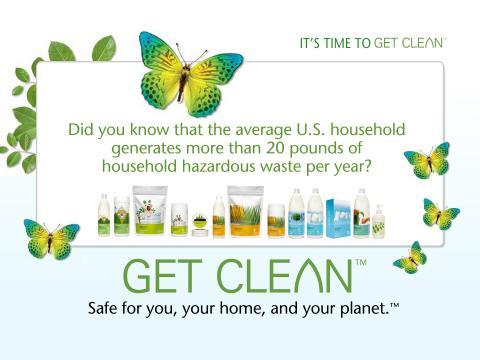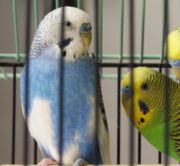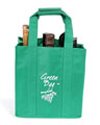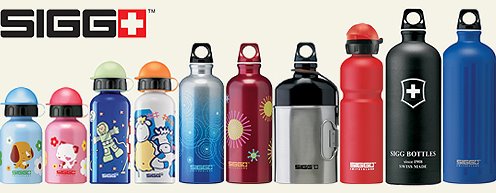Wednesday, April 30, 2008
Still chasing parakeet
Clean does not have a smell

Plastax
The PlasTax - About Ireland's Plastic Bag Tax
"It works." - The Australian (Australia's national daily newspaper)
"...surprisingly popular" - Plastic News
"I think it's a cracking good idea." - UK Environment Minister, Michael Meacher
"the wave of what's going to happen next" - Vincent Cobb, ReusableBags.com Founder, listen to interview
"Plastic bags were not outlawed, but carrying them became socially unacceptable" - New York Times In March of 2002, Republic of Ireland became the first country to introduce a plastic bag tax, or PlasTax. Designed to rein in their rampant consumption of 1.2 billion plastic shopping bags per year, the tax resulted in a 90% drop in consumption, and approximately 1 billion fewer bags consumed annually. To complete the win-win scenario, approximately $9.6 million was raised from the tax in the first year, which is earmarked for a green fund established to benefit the environment. Several other countries and cities around the world are now considering implementing a similar tax, including UK, Australia and New York City.How does it work? First of all, the purpose is to change consumer behavior, not to generate revenue, moving habits from mindless consumption, to reducing and reusing. In a nutshell, it's a simple market-based solution in the form of a consumption tax. Individuals pay a tax of $.15 per plastic bag consumed at check out. Retailers save money since they only have to stock a smaller quantity of bags (in Ireland, on average they were spending $50 million a year on single-use plastic bags before the tax). Many retailers are also now benefiting from selling reusable bags. Administration is straightforward and retailers keep simple records on purchasing and receipts, while the government monitors retailer compliance and collects revenue. What is exempt? In Ireland, exemptions from the tax include heavier weight reusable plastic bags; bags used for meat, fish, or poultry; bags for unpackaged produce, ice, or other foods without packaging. What are the results? Consumption has dropped approximately 90%, from 1.2 billion to 230 million per year. Litter has been dramatically reduced. Approximately 18,000,000 liters of oil have been saved due to reduced production of bags. Reusable shopping bags, rather than paper, are taking the place of plastic disposables. Weaker plastic bag companies went out of business, while others have benefited by seizing the opportunity to make reusable shopping bags. Summary The PlasTax is a major success. Consumers have widely adopted using reusable shopping bags and retailers no longer incur the costs associated with giving away free bags.
www.reusablebags.com hehe, you would think I work for them or something, I don't! I just like their stuff and they have a lot of useful info on their site.
Chasing Parakeets

Living Plastic Free

I just signed up for a Living Plastic Free blog subscription. My kitchen is plastic free, but my food isn't yet. I don't use plastic storage containers and I use glasses now, not plastic cups. I do have a few plastic cups for our patio, as we don't want broken glass out there, and friends come over to hang out. I might have them start bringing their own reusable cups or just go with glass and pray no one breaks any. I bring out my wine glasses and seem to do okay with them. But the plastics on food....I mean, you get meat, what does it come in, you get pretzels, produce (carrots, etc)....everything is plastic! Yikes. I didn't even think about that. I have to start going to a butcher who wraps in paper, like in the "old" days. Too bad we don't live like that anymore. returnable cocacola bottles, milk bottles etc.
I have stopped using plastic bags at stores, except maybe once in a while, where I reuse them in my bathroom trash (and I know, I should not even do that). I have to look into those biodegradable trash bags.....
My green bags are my favorite. I have ones from Australia with the leaf on them, I have Shaklee ones and even Target. I even have two that hold wine for when we go to wineries. They each hold six and it works for juices at the store also. They hold a ton of weight. I got comments on them when I started to carry them last year, and funny, since then, the stores sell them now....I was the only one last year in my store with them. (not that I started it, Oprah did a big thing about it and got everyone interested).
We recycle everything we possibly can. I don't buy plastic milk containers anymore either, plastic bottles of water, in fact, we got SIGGs for our water and they are in the frige ready to go at the drop of a hat. We recycle every bit of paper in this house, and well, it can get out of hand. Our recyclers only come twice a month and that really gets to be a mess here with all the cardboard packaging, pizza boxes etc that we have waiting for them to pick up.
I could go on and on, as I am living and learning to be more ecologically friendly, but I must stop for now.
Shannon
http://www.reusablebags.com/ a great site to get all kinds of earth friendly things.....
Facts and figures regarding the true cost of plastic bags
Want to know more about Ireland's wildly successful PlasTax? How about numbers on consumption? Think paper bags are better than plastic bags?...Think again, and be in the know.
Top Facts - Consumption
Each year, an estimated 500 billion to 1 trillion plastic bags are consumed worldwide. That comes out to over one million per minute. Billions end up as litter each year.
According to the EPA, over 380 billion plastic bags, sacks and wraps are consumed in the U.S. each year.
According to The Wall Street Journal, the U.S. goes through 100 billion plastic shopping bags annually. (Estimated cost to retailers is $4 billion)
According to the industry publication Modern Plastics, Taiwan consumes 20 billion bags a year—900 per person.
According to Australia’s Department of Environment, Australians consume 6.9 billion plastic bags each year—326 per person. An estimated .7% or 49,600,000 end up as litter each year.
Top Facts - Environmental Impact
Hundreds of thousands of sea turtles, whales and other marine mammals die every year from eating discarded plastic bags mistaken for food.
Plastic bags don’t biodegrade, they photodegrade—breaking down into smaller and smaller toxic bits contaminating soil and waterways and entering the food web when animals accidentally ingest.
As part of Clean Up Australia Day, in one day nearly 500,000 plastic bags were collected.
Windblown plastic bags are so prevalent in Africa that a cottage industry has sprung up harvesting bags and using them to weave hats, and even bags. According to the BBC, one group harvests 30,000 per month.
According to David Barnes, a marine scientist with the British Antarctic Survey, plastic bags have gone "from being rare in the late 80s and early 90s to being almost everywhere from Spitsbergen 78° North [latitude] to Falklands 51° South [latitude].
Plastic bags are among the 12 items of debris most often found in coastal cleanups, according to the nonprofit Center for Marine Conservation.
Top Facts - Solutions
In 2001, Ireland consumed 1.2 billion plastic bags, or 316 per person. An extremely successful plastic bag consumption tax, or PlasTax, introduced in 2002 reduced consumption by 90%. Approximately 18,000,000 liters of oil have been saved due to this reduced production. Governments around the world are considering implementing similar measures.
July 2003, ReusableBags.com goes live, advancing the mainstream adoption of reusable shopping bags.
Each high quality reusable shopping bag you use has the potential to eliminate hundreds, if not thousands, of plastic bags over its lifetime.
Monday, April 28, 2008
My new wash line
Well he bought me a retractable one yesterday. We did not put it up yet, and I can't wait to use it! We already have the set up for it to hook to, as the lady we bought our house from had one so he just has to hang the device itself.
I will let ya know how that goes.
How to make a Non-toxic cleaning kit
www.shaklee.net/dillman if you are interested in shaklee cleaning products!
How to Make a Non-Toxic Cleaning Kit
By Annie B. Bond, author of Clean & Green (Ceres Press, 1990).Most modern synthetic cleaning products are based on age-old formulas using natural ingredients that were passed down through the generations because the chemistry was right. Going back to the original naturally derived ingredients is a way to make cleaning products that work, don’t pollute and save you money. Most are found in your kitchen cupboards. Mix and match with well-chosen and environmentally friendly green cleaning products found in health food stores, and you can easily and simply transform your home into a non-toxic and healthy haven.Non-toxic cleaning can give you a deep feeling of gratification in knowing that your family’s health is protected, and that your home is a place for your bodies to rest and recuperate rather than promote harm.Making your own nontoxic cleaning kit will take you no time at all with these simple, straightforward directions, and with this kit you will be supplied with enough cleaning product for months of cleaning.As an added bonus, ounce for ounce homemade cleaning formulas cost about one-tenth the price of their commercial counterpart—and that includes costly, but worthwhile essential oils, and concentrated, all-purpose detergents for homemade recipes.SUPPLIESBaking sodaWashing sodaWhite distilled vinegarA good liquid soap or detergentTea tree oil6 clean spray bottles2 glass jarsRead more about these 5 basic cleaning ingredients, and a vinegar update.CREAMY SOFT SCRUBBERSimply pour about 1/2 cup of baking soda into a bowl, and add enough liquid detergent to make a texture like frosting. Scoop the mixture onto a sponge, and wash the surface. This is the perfect recipe for cleaning the bathtub because it rinses easily and doesn’t leave grit.Note: Add 1 teaspoon of vegetable glycerin to the mixture and store in a sealed glass jar, to keep the product moist. Otherwise just make as much as you need at a time.WINDOW CLEANER1/4-1/2 teaspoon liquid detergent3 tablespoons vinegar2 cups waterSpray bottlePut all the ingredients into a spray bottle, shake it up a bit, and use as you would a commercial brand. The soap in this recipe is important. It cuts the wax residue from the commercial brands you might have used in the past.OVEN CLEANER1 cup or more baking sodaWaterA squirt or two of liquid detergentSprinkle water generously over the bottom of the oven, then cover the grime with enough baking soda that the surface is totally white. Sprinkle some more water over the top. Let the mixture set overnight. You can easily wipe up the grease the next morning because the grime will have loosened. When you have cleaned up the worst of the mess, dab a bit of liquid detergent or soap on a sponge, and wash the remaining residue from the oven. If this recipe doesn’t work for you it is probably because you didn’t use enough baking soda and/or water.ALL-PURPOSE SPRAY CLEANER1/2 teaspoon washing sodaA dab of liquid soap2 cups hot tap waterCombine the ingredients in a spray bottle and shake until the washing soda has dissolved. Apply and wipe off with a sponge or rag.FURNITURE POLISH1/2 teaspoon oil, such as olive (or jojoba, a liquid wax)1/4 cup vinegar or fresh lemon juiceMix the ingredients in a glass jar. Dab a soft rag into the solution and wipe onto wood surfaces. Cover the glass jar and store indefinitely.VINEGAR DEODORIZERKeep a clean spray bottle filled with straight 5 percent vinegar in your kitchen near your cutting board and in your bathroom and use them for cleaning. I often spray the vinegar on our cutting board before going to bed at night, and don’t even rinse but let it set overnight. The smell of vinegar dissipates within a few hours. Straight vinegar is also great for cleaning the toilet rim. Just spray it on and wipe off.MOLD KILLERSTea Tree TreasureNothing natural works for mold and mildew as well as this spray. I’ve used it successfully on a moldy ceiling from a leaking roof, on a musty bureau, a musty rug, and a moldy shower curtain. Tea tree oil is expensive, but a little goes a very long way. Note that the smell of tea tree oil is very strong, but it will dissipate in a few days.2 teaspoons tea tree oil2 cups waterCombine in a spray bottle, shake to blend, and spray on problem areas. Do not rinse. Makes two cups.Vinegar SprayStraight vinegar reportedly kills 82 percent of mold. Pour some white distilled vinegar straight into a spray bottle, spray on the moldy area, and let set without rinsing if you can put up with the smell. It will dissipate in a few hours.


